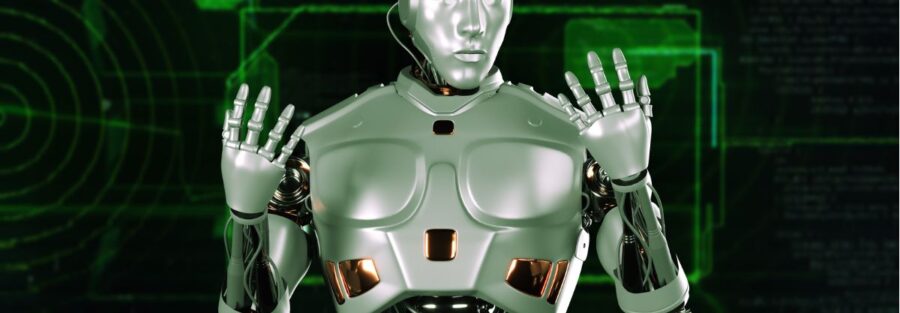Balancing Efficiency and Human Insight
Incorporating Artificial Intelligence (AI) into Security Operations Center (SOC) level analysis has become increasingly popular due to its potential to enhance efficiency and accuracy in detecting and responding to cyber threats. AI technologies, such as machine learning and advanced analytics, can process vast amounts of data at unprecedented speeds, identifying patterns and anomalies that might be missed by human analysts. However, despite these advantages, there are significant pitfalls, including a lack of context and the indispensable need for human analysis. This blog post delves into the benefits and challenges of integrating AI into SOC operations and emphasizes the crucial balance between automated and human-driven analysis.
The Promise of AI in SOC Level Analysis
Enhanced Threat Detection: AI-driven systems can analyze large volumes of data in real-time, identifying potential threats based on patterns and behaviors that deviate from the norm. Machine learning algorithms can be trained on historical data to recognize known threats and adapt to emerging ones, providing a dynamic and proactive defense mechanism.
Improved Efficiency and Response Times: AI can significantly reduce the time it takes to detect and respond to threats. Automated systems can filter out false positives, prioritize alerts, and even execute predefined response actions, allowing human analysts to focus on more complex tasks and strategic decision-making.
Scalability: As organizations grow, the volume of data and the number of potential threats increase. AI systems can scale to handle large datasets without a corresponding increase in human resources, making it possible to maintain robust security operations even as the organization expands.
Pitfalls of Incorporating AI into SOC Analysis
Despite its potential, the integration of AI into SOC level analysis is not without challenges. Understanding these pitfalls is essential to leveraging AI effectively.
Lack of Context: AI systems, while adept at identifying anomalies and patterns, often lack the contextual understanding that human analysts possess. For example, an AI might flag unusual network activity as a threat without recognizing that it is part of a legitimate business operation. This lack of context can lead to both false positives and false negatives, undermining the effectiveness of the security operations.
Example: An AI system might flag a spike in data transfer to an external server as a potential data exfiltration attempt. However, a human analyst might recognize that this spike is due to a scheduled data backup process, thus avoiding an unnecessary investigation.
Dependence on Training Data: AI systems rely heavily on historical data to learn and improve. If the training data is incomplete or biased, the AI’s effectiveness can be compromised. Additionally, new and sophisticated threats that differ significantly from past patterns may not be accurately identified by the AI, leading to potential security gaps.
Example: If an AI system is trained primarily on malware samples from the financial industry, it may not be effective in identifying threats specific to the healthcare sector, which could involve different tactics, techniques, and procedures.
Complexity and Maintenance: Implementing and maintaining AI systems can be complex and resource-intensive. These systems require regular updates and tuning to remain effective, and any changes in the organization’s network or operational environment can necessitate adjustments to the AI models. This ongoing maintenance can strain resources and divert attention from other critical security tasks.
Example: A SOC implementing AI-driven threat detection might need dedicated personnel to manage the AI system, perform regular updates, and ensure it adapts to new types of threats. This can be a significant investment in terms of time and money.
The Need for Human Analysis
Given the limitations of AI, human analysis remains an essential component of effective SOC operations. Here’s why human expertise cannot be entirely replaced by AI:
Contextual Understanding: Human analysts bring a deep understanding of the organizational context, business processes, and industry-specific threats. This knowledge allows them to interpret AI-generated alerts more accurately and make informed decisions about the appropriate response.
Example: A human analyst can distinguish between normal business operations and suspicious activities that AI might flag, reducing the number of false positives and ensuring that genuine threats are addressed promptly.
Creativity and Intuition: Humans possess creativity and intuition, enabling them to think outside the box and identify novel attack vectors that AI might miss. Cyber attackers often employ unconventional methods, and human analysts can adapt and respond to these evolving threats in ways that AI cannot.
Example: A human analyst might recognize a subtle, slow-moving threat that gradually changes its behavior to avoid detection—something that a pattern-recognition-based AI might overlook.
Ethical and Strategic Decision-Making: Certain decisions, especially those involving ethical considerations or strategic implications, require human judgment. For instance, determining the appropriate response to a suspected insider threat or deciding whether to report a breach to regulatory authorities involves nuanced decision-making that goes beyond what AI can provide.
Example: During a suspected data breach, human analysts can weigh the implications of public disclosure versus the need for internal investigation, considering factors like regulatory requirements, reputational risk, and stakeholder impact.
Balancing AI and Human Analysis
To leverage the strengths of both AI and human analysis, organizations should aim for a balanced approach that integrates AI capabilities with human expertise. Here’s how to achieve this balance:
Augment, Don’t Replace: AI should be used to augment human capabilities, not replace them. By automating routine tasks and filtering out noise, AI can free up human analysts to focus on higher-level analysis and decision-making.
Example: AI can handle initial threat triage, filtering out false positives and highlighting high-priority alerts for human review. This allows analysts to concentrate on investigating and mitigating real threats.
Continuous Training and Collaboration: Continuous training and collaboration between AI systems and human analysts are crucial. AI models should be regularly updated with new data and threat intelligence, while human analysts should stay informed about the latest AI capabilities and limitations.
Example: Regular training sessions can be held where analysts review AI-generated alerts, providing feedback to improve the AI’s accuracy and effectiveness. This iterative process ensures that both AI and human skills are continually refined.
Hybrid Teams and Processes: Establish hybrid teams that combine AI specialists and security analysts. This ensures that AI systems are properly maintained and integrated into SOC workflows, and that human expertise is effectively leveraged.
Example: A hybrid SOC team might include data scientists who develop and maintain AI models, alongside security analysts who interpret AI findings and make strategic decisions based on those insights.
Implementing AI in SOC: Best Practices
For organizations looking to incorporate AI into their SOC, here are some best practices to consider:
Define Clear Objectives: Clearly define the objectives of integrating AI into SOC operations. Understand what you aim to achieve, whether it’s improved threat detection, faster response times, or enhanced scalability.
Example: Set specific goals such as reducing the average time to detect threats by 30% or decreasing the number of false positives by 50%.
Invest in Quality Data: Ensure that your AI systems are trained on high-quality, representative data. Regularly update the training datasets to include new types of threats and emerging attack patterns.
Example: Maintain a diverse dataset that includes various threat vectors, industries, and scenarios to train your AI models comprehensively.
Foster a Culture of Continuous Improvement: Promote a culture of continuous improvement where AI systems and human analysts are constantly learning and evolving. Encourage feedback loops and regular assessments of AI performance.
Example: Implement regular review sessions where analysts discuss AI performance, share insights, and identify areas for improvement.
Focus on Explainability: Ensure that AI systems provide explainable outputs. Analysts should understand how AI arrived at a particular conclusion to make informed decisions and maintain trust in the AI system.
Example: Use AI models that offer transparency and allow analysts to trace back the reasoning behind specific alerts or recommendations.
Incorporating AI into SOC level analysis offers significant benefits, including enhanced threat detection, improved efficiency, and scalability. However, it also presents challenges such as a lack of context and the need for continuous human oversight. By understanding these pitfalls and leveraging the strengths of both AI and human analysis, organizations can build a robust and effective security operations center.
A balanced approach that integrates AI capabilities with human expertise ensures that security operations are not only efficient but also adaptive and resilient in the face of evolving threats. As AI technology continues to advance, the collaboration between machines and humans will be key to achieving comprehensive and proactive cybersecurity.



